World Cities Day is an opportunity to highlight the vital role Amazonian cities can play in sustaining a healthy Amazonia—and, in doing so, protecting its extraordinary biodiversity and ecological functions. This idea is at the heart of Cities in Amazonia: People and Nature in Harmony, a book that brings together contributions from more than fifty authors from the IDB and across the region (Libertun de Duren, 2025). Together, they reflect on the unique challenges and opportunities these cities face today.
Map: Urban population growth and deforestation (2000-2020)
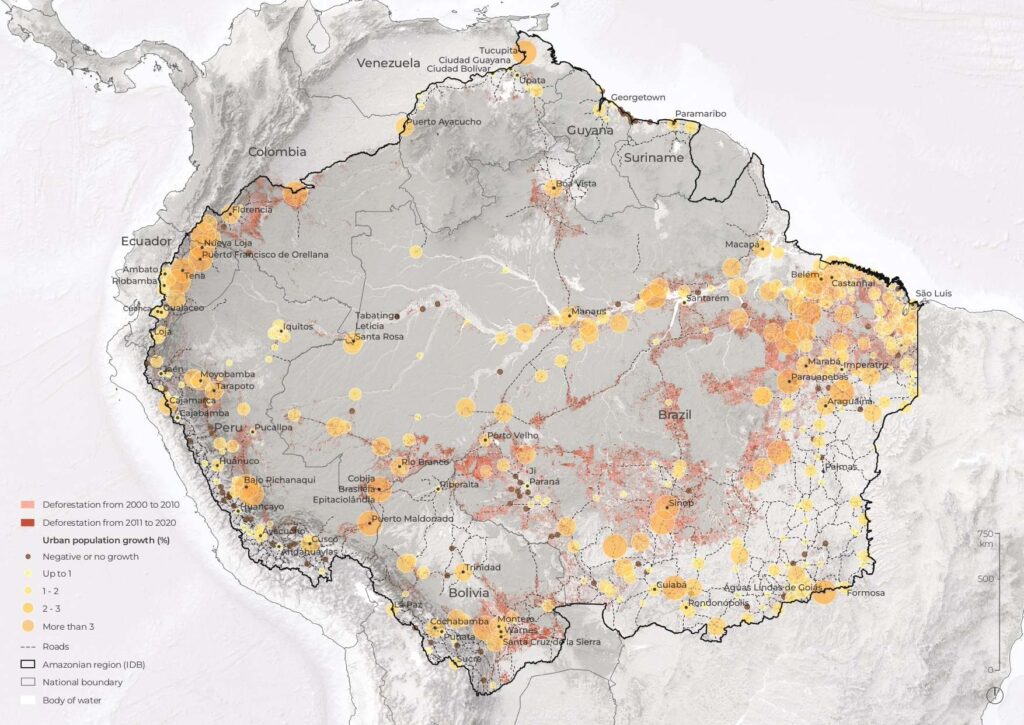
The focus on cities in Amazonia is well warranted, given that over 70% of the region’s 58 million people live in urban areas. Despite some recent progress, these cities remain among the poorest in their countries: approximately 32% of urban residents—around 27 million people—live on less than $8.30 per day. Basic infrastructure and public services are often precarious or inadequate. Nearly half of urban households in Amazonia lack access to a sewage system, one in five lack access to potable water, and one in three are without Internet connectivity.
In addition, the built environment of many of these cities is deeply intertwined with the surrounding natural landscape, which makes them highly vulnerable to natural disasters and increases the environmental degradation they cause when poorly managed.
Also, a defining constraint on development and growth in these cities is their remoteness and fragmentation. Most urban areas are small, dispersed, and poorly integrated into national markets or transportation networks. In Colombia and Venezuela, travel times to the nearest city with more than 50,000 inhabitants often exceed three hours; in Brazil, the average is about 1.5 hours—twice as long as in non-Amazonian regions. Many cities, including Iquitos in Peru, Leticia in Colombia, and São Gabriel da Cachoeira in Brazil, remain accessible only by river or air, leaving them highly vulnerable to changing navigability conditions. These barriers generate isolation and significantly depress productivity. Weak transport and digital infrastructure restrict the flow of goods and people, raising business costs and discouraging investment, leaving most cities with minimal exports and economies dominated by public administration and retail trade. As a result, the “connectivity trap” keeps Amazonian cities locked in low-value, subsistence economies marked by scarce opportunity and stagnant wages.
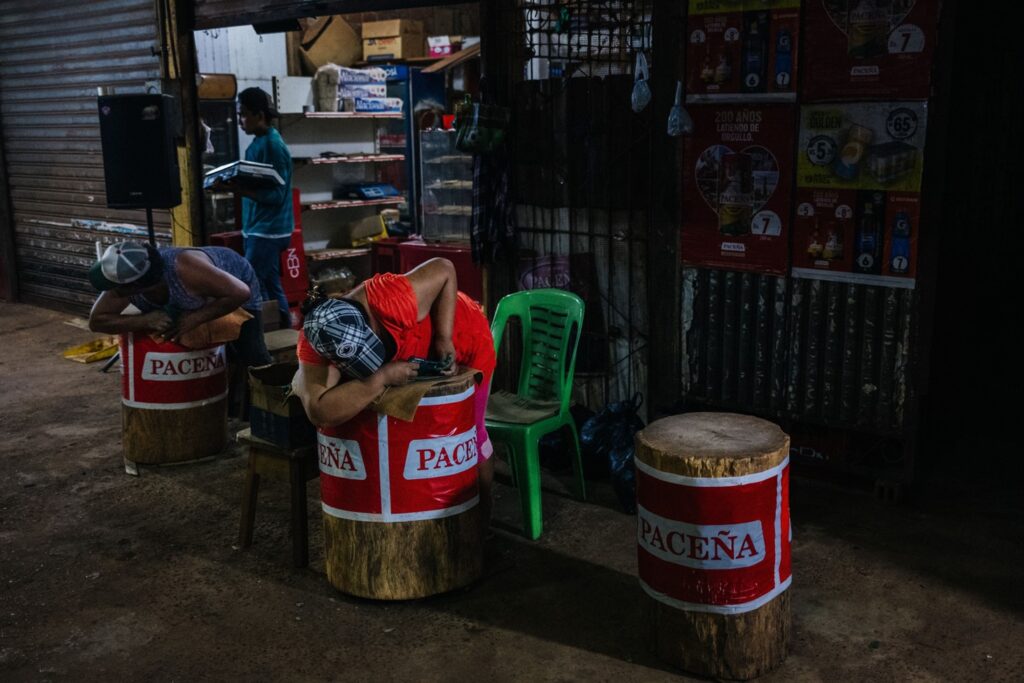
Unlocking Amazonian Prosperity
Urban sustainable development can offer a pathway for economic advancement and job creation that does not come at the expense of the Amazonian biome. Cities must become genuine hubs of productivity, raising the diversity and complexity of their economies rather than acting as gateways for raw resource flows.
Recognizing the particularities of the urban system of Amazonia can raise productivity and boost service delivery across the region. Upgrading existing primary road infrastructure and adopting strategic, environmentally sensitive multimodal transport can knit cities together while safeguarding the forest. Air transport hubs, as in Manaus, show that investing in connectivity can spur growth and create high-quality jobs with lower deforestation risks (Cheston and Rueda-Sanz 2023).
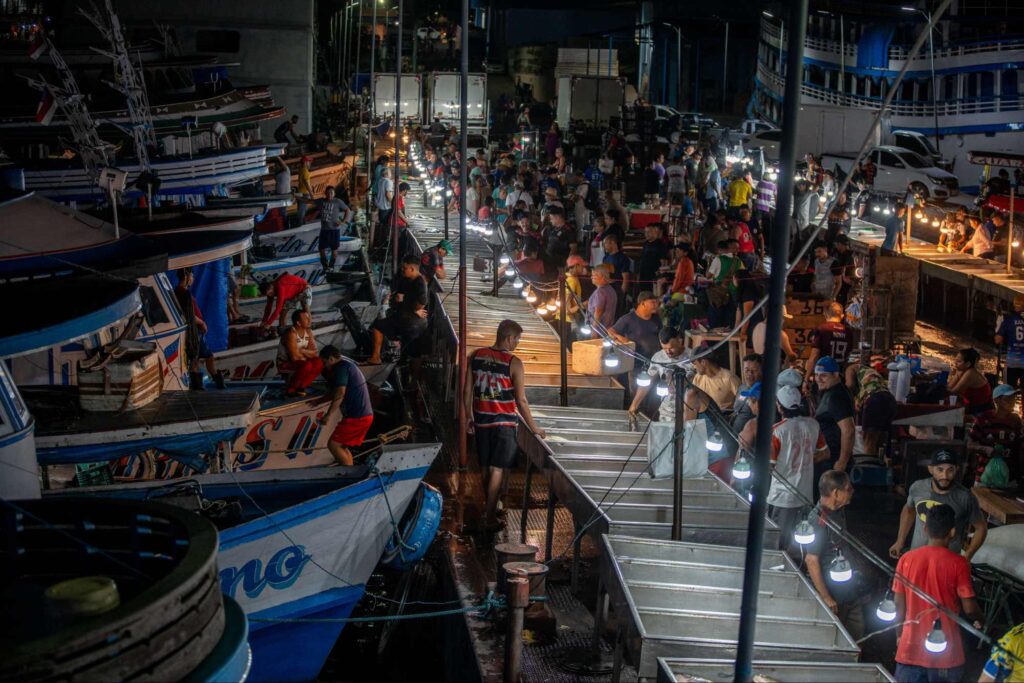
Urban policymaking must shift from reactive management to proactive planning. Promoting denser, more efficient forms of development can help control cities’ ecological footprints while amplifying agglomeration effects and infrastructure access (Lall et al. 2021). Prioritizing investments in modern infrastructure and education will unlock opportunities for governments and private investors, raising wages and improving living conditions while reducing pressure on the frontier.
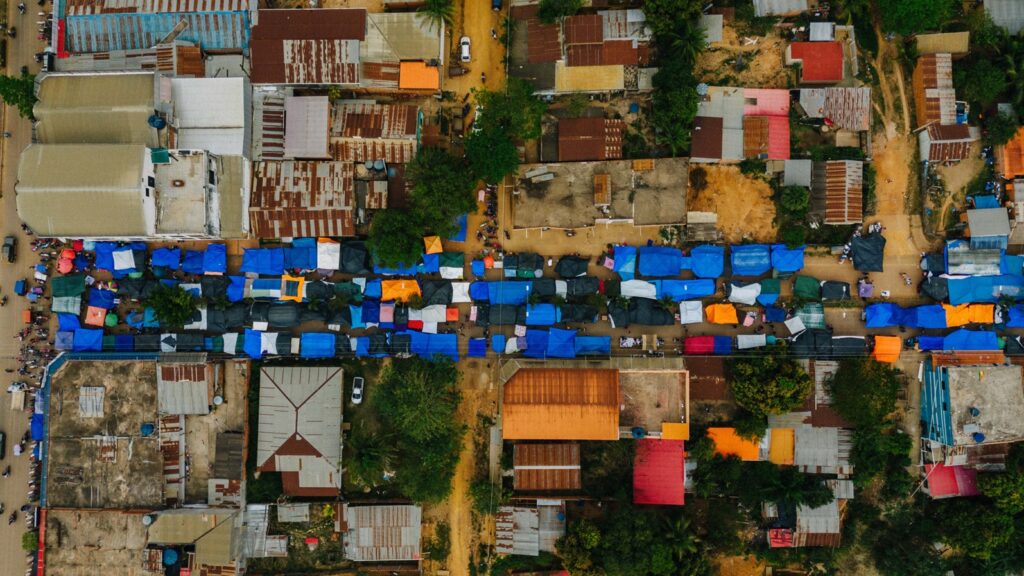
Making cities engines of productive and sustainable growth creates a foundation for higher incomes, better jobs, and effective forest protection. Progressive urban strategies—integrating infrastructure, connectivity, and institutional innovation—can deliver enduring benefits for Amazonian people and ecosystems.
At the Amazon Cities Forum (ACF), for example, forty-five cities from eight countries are working on a common strategic agenda to promote sustainable urban development in the region. Over the past two years, the ACF has made significant progress by focusing on three key projects. First, it has launched pilot initiatives to address climate challenges, such as urban tree management in Belém and San José del Guaviare, and carbon sequestration assessments in Coronel Portillo and Georgetown. Second, the Forum has strengthened local capacities by supporting member cities through technical assistance programs aimed at the initial structuring of climate resilience projects and resource mobilization. Third, it is fostering a community of sustainable practices across the region, enabling cities to promote peer learning and increase regional visibility.
In parallel, the ministries of Housing and Urban Development from the eight Amazonian countries are advancing the MINURVI Amazonia Working Group, a regional platform developed in collaboration with the IDB, UN-Habitat, and other knowledge partners. The Working Group aims to exchange knowledge, promote regional cooperation and analyze trends on urbanization, territorial planning, housing, and financing.
To guide this effort, the initiative is developing a Strategic Framework for Sustainable Urban Development in Amazonia. This instrument will define common principles, objectives, and action lines, fostering multilevel and interinstitutional collaboration. It seeks to promote resilient, inclusive cities that coexist in harmony with Amazonia’s ecosystems through coordinated medium- and long-term strategies.
For further information, you can review the IDB publication of Cities in Amazonia: people and nature in harmony, which will be launched on November 3rd during the COP30 Local Leaders Forum in Rio de Janeiro.
As part of its Amazonia Forever program, the Inter-American Development Bank is supporting regional coordination for sustainable and inclusive development that collaborates with the public and private sectors, multilateral development banks, and non-governmental and civil society organizations for the Amazonia.

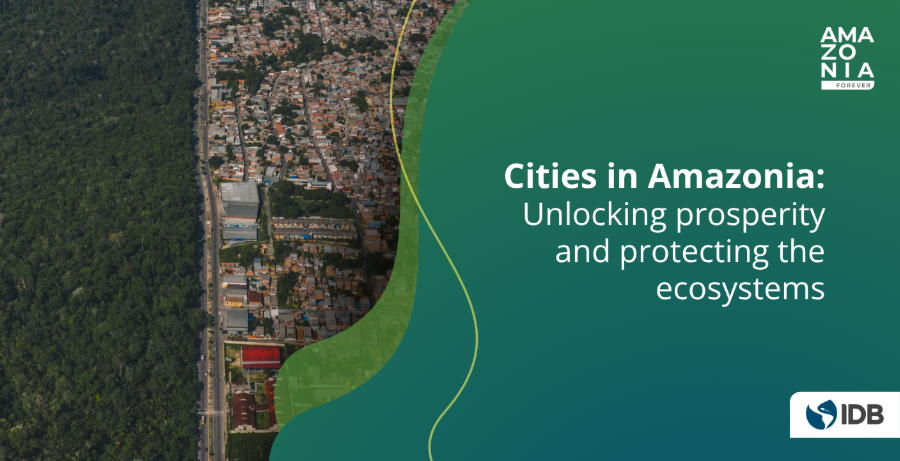
Leave a Reply